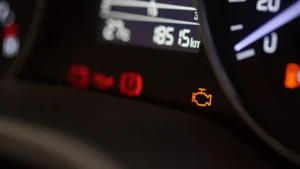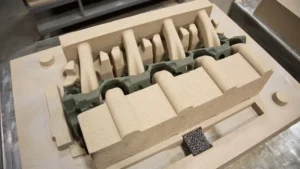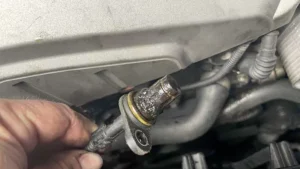A turbocharged engine is an advanced type of internal combustion engine that increases power output without enlarging engine size. It achieves this by using a turbocharger, a device that forces extra air into the combustion chamber. By compressing more air into the cylinders, the engine can burn more fuel efficiently, producing higher horsepower and torque compared to a similarly sized naturally aspirated engine. This combination of compact size and enhanced performance makes turbocharging a common feature in modern vehicles, providing both better acceleration and improved fuel efficiency under the right conditions.
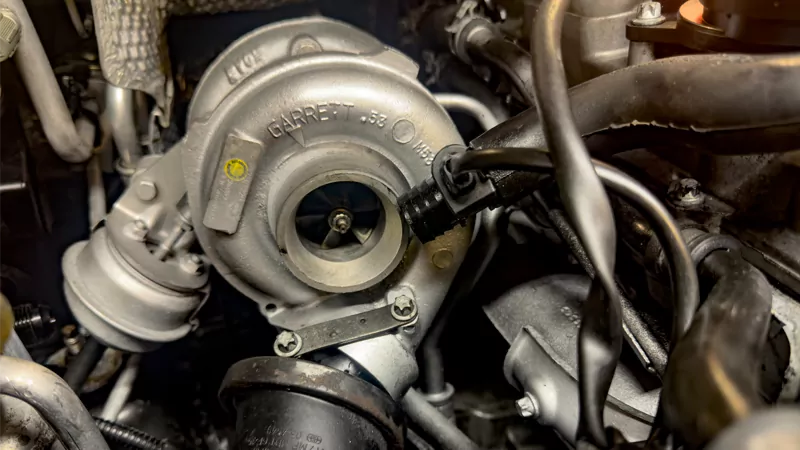
How a Turbocharger Works?
The turbocharger itself consists of two main parts: a turbine and a compressor, connected by a shaft. The turbine is driven by the engine’s exhaust gases. As exhaust passes through the turbine housing, it spins the turbine at extremely high speeds—often exceeding 150,000 revolutions per minute in modern systems. The spinning turbine drives the compressor, which draws in fresh air, compresses it, and delivers it into the engine’s cylinders under higher pressure.
This pressurized air, referred to as “boost,” increases the oxygen content in the combustion chamber, allowing more fuel to combust efficiently and resulting in significantly more power. Modern turbocharged engines often include an intercooler to cool the compressed air before it enters the engine, improving air density and preventing engine knocking. Some systems use variable geometry turbochargers (VGT), which adjust the angle of the turbine blades according to engine speed and load, reducing turbo lag and providing smoother power delivery across a wide range of RPMs.
Turbocharged vs. Naturally Aspirated Engines
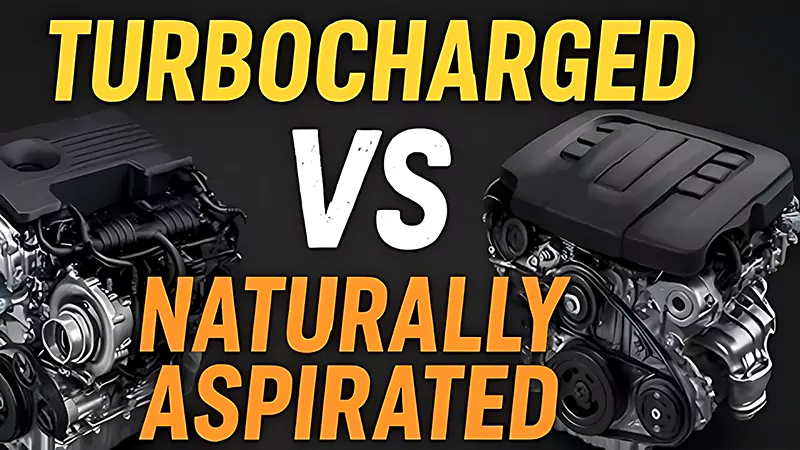
Naturally aspirated engines rely entirely on atmospheric pressure to draw air into the cylinders. This limits the engine’s maximum power output. Turbocharged engines, on the other hand, overcome this limitation by forcing more air into the combustion chamber, effectively allowing a smaller engine to produce the power of a larger one.
One trade-off is turbo lag—a short delay between opening the throttle and experiencing the power boost. Turbo lag occurs because the turbocharger depends on exhaust flow to spin the turbine, and at low engine speeds, there may not be sufficient exhaust pressure to generate immediate boost. Engineers have developed solutions such as twin-scroll turbos, electric-assist turbos, and variable geometry systems to minimize lag and improve responsiveness.
Comparing Turbocharged, Supercharged, and Twincharged Engines
It is important to differentiate between turbocharged and supercharged engines. A turbocharger uses exhaust gases to spin its turbine and compress air, while a supercharger is mechanically driven, typically via a belt connected to the crankshaft. Superchargers deliver immediate boost without waiting for exhaust flow, but they consume some engine power to operate and can generate additional heat. Twincharged engines combine both systems, taking advantage of the low-end responsiveness of a supercharger and the high-end efficiency of a turbocharger.
Advantages and Considerations
Turbocharged engines offer several clear benefits. They provide higher power-to-weight ratios, improve fuel efficiency under light to moderate driving conditions, and allow smaller engines to match the output of larger naturally aspirated engines. However, they also require careful engineering to manage heat, lubrication, and fuel quality. Increased temperatures and pressures demand robust cooling systems, precise fuel injection, and high-quality engine oil. Despite these challenges, modern turbocharging technology has significantly enhanced engine reliability, efficiency, and longevity.
Conclusion
A turbocharged engine is a sophisticated engineering solution that combines power and efficiency. By forcing additional air into the combustion chamber, it allows smaller engines to achieve the performance of larger engines while maintaining better fuel economy under typical driving conditions. With advancements such as intercoolers and variable geometry turbos, turbocharged engines deliver smooth, responsive power and have become a central technology in modern automotive engineering.
As a leading manufacturer of high-performance engines, we specialize in designing and producing reliable, efficient, and powerful turbocharged engines. Whether you are looking to upgrade your vehicle or develop a new automotive project, our expertise ensures you get engines that deliver both performance and durability. Contact us today to learn how our engines can meet your needs.

